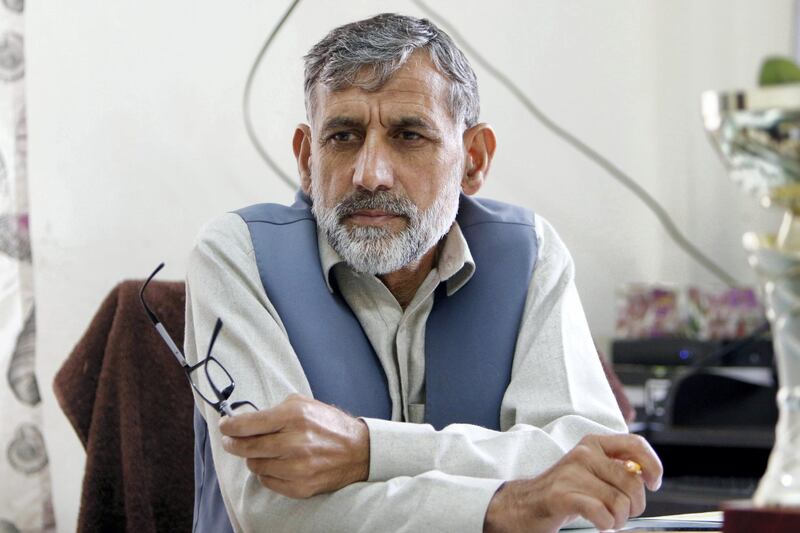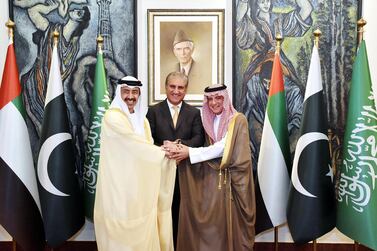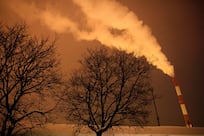Growing up, all Naeem Hakeem had wanted was to study to become an electrical engineer.
But in 2008, his dream was shattered when the Pakistan Taliban blew up his school in the country’s north-west Khyber Pakhtunkhwa province.
The militants had emerged as a dominant force in the mountainous Swat valley district, and had begun enforcing a strict version of Islam.
They banned modern education for both boys and girls as part of their efforts to prevent any semblance of a modern education system.
A year later, Naeem, along with his family, had no choice but to leave their home when the Pakistan military launched a counter-offensive.
The area became too dangerous to risk staying, with frequent firefights between combatants as well as numerous deadly roadside bombings.
"That was the most terrible moment of my life, seeing my school being burnt out in front of my eyes," Hakeem, now 21, told The National.
“I spent around two years in a makeshift tent, far away from my hometown and missed my education too. Three years of my life were wasted.”
Hakeem, now an undergraduate student in Swat’s capital Saidu Sharif, told how - more than a decade later - his life was finally back on track.
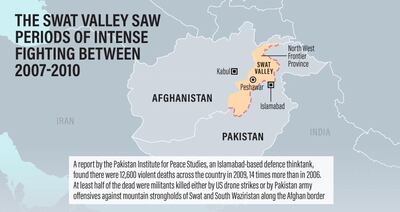
He and his family were able to return to his rural hometown of Matta in 2011, and he had since resumed his studies.
The reason for his change of fortune, he revealed, was largely down to a UAE decision to help fund the rebuilding of dozens of schools in Swat.
Through the UAE-Pakistan Assistance Programme, the Emirates has allocated $41.52 million (Dh152m) for the reconstruction of 60 schools in Khyber Pakhtunkhwa province.
More than 50 have already been built, with an initial focus on two districts – Swat and South Waziristan. More than 30,000 students are now enrolled.
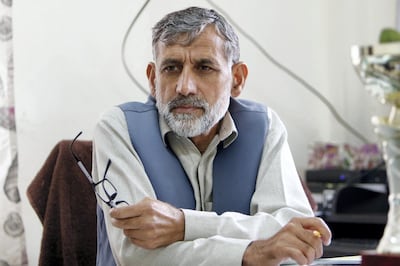
“The militants had blown up our school at night, making it unable to be used for education purposes,” said Mohammad Alam, 48, a teacher at Government Boys High School Ahingaro Dherai – a second school just outside the town of Mingora that also became a target.
“But you can’t imagine [how incredible it is] now seeing this beautiful two-storey building constructed with the financial assistance of the UAE.”
According to UNICEF, Pakistan has the world’s second-highest number of out-of-school children, with an estimated 22.8 million aged between 5-16 not attending classes.
The 2018-19 Pakistan Economic Survey found the country’s literacy rate for those aged 15 and above was at 57 per cent.
Meanwhile, Maldives tops the South Asia region at 98.6 per cent, followed by Sri Lanka at 91.2 per cent, Iran at 84.7 per cent and India at 69.3 per cent.
Because of the fighting in Swat, child literacy in Khyber Pakhtunkhwa province is now lower than the national average, at 55 per cent.
But that statistic is fast being improved, due in part to the intervention of international donors such as the UAE.
The Swat valley now has a total of 1,647 public schools, Dr Jawad Iqbal, an education activist, revealed.
He said that between 2005 and 2009 – during the worst of the fighting – 273 schools were either partially or completely destroyed by militants.
Haji Zahid Khan, 63, an elder of the area, told The National how Mullah Fazlullah, once the head of the Swat Taliban and who later became leader of the Pakistani Taliban, had argued against any form of western education in the valley since 2006.
Fazlullah, killed in a US drone strike last year, warned parents not to send their children to schools and asked young girls to observe purdah, the religious and social practice of female seclusion that includes the wearing of burqas.
![The hustle and bustle returns to Khooni Chowk [bloody square] of Mingora city where Taliban during occupation of Swat district in Pakistan’s Khyber Pakhtunkhwa province used to display corpses of summarily executed people by the group each morning. Aamir Saeed for The National](https://thenational-the-national-prod.cdn.arcpublishing.com/resizer/v2/MJM5KQV46SDX25IWOUXHVA6T6Y.jpg?smart=true&auth=889c69f9ad7c4b31c430e34771145807c7228a36d64ffa917bdd485091c33d4c&width=400&height=266)
He said that since the end of the fighting in roughly 2010, many students had returned to their studies, although some parents had proved reluctant to send their children to improvised classrooms prior to their being fully rebuilt.
“I got admission in this school for its excellent environment for female students,” said Fatima Ali, a 10th grade student whose name has been changed to protect her identity.
Her school, some six kilometres outside of Mingora, and was first set fire to and then completely demolished by the Pakistan Taliban.
“My parents couldn’t afford private schools’ fee, so I had to wait till reconstruction of this school in my area,” she said. Now, as many as 1,300 students study at the new premises built by the UAE.
“The UAE is developing many humanitarian projects in Pakistan and our special focus is on improving education facilities for the youth,” said Hamad Obaid Ibrahim Al Zaabi, the UAE’s Ambassador to Pakistan.
“These educational institutions are a gift to Pakistani students from the UAE people and the government.”
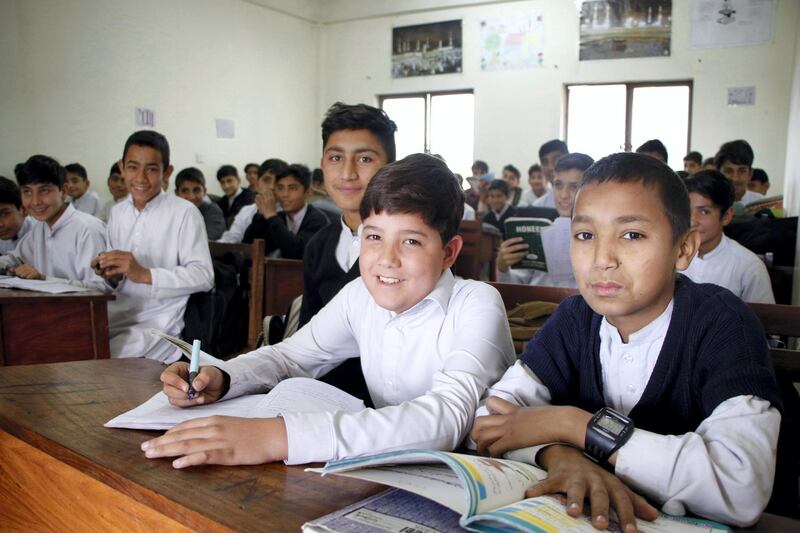
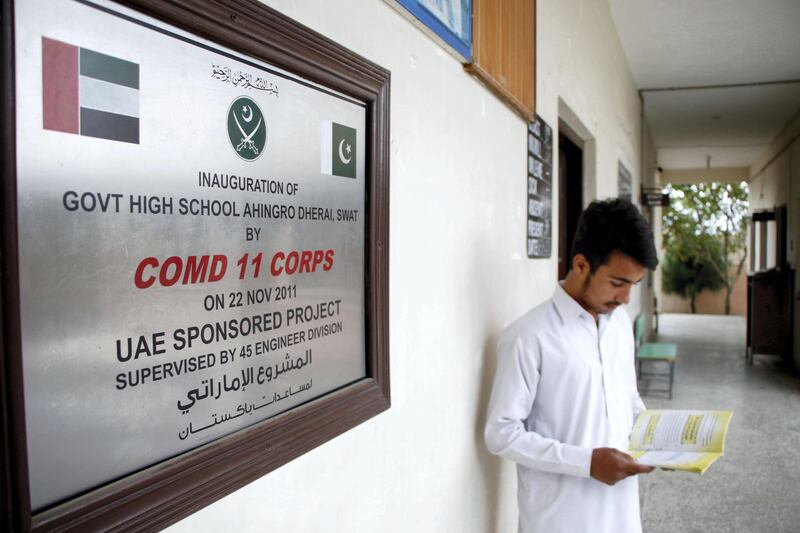
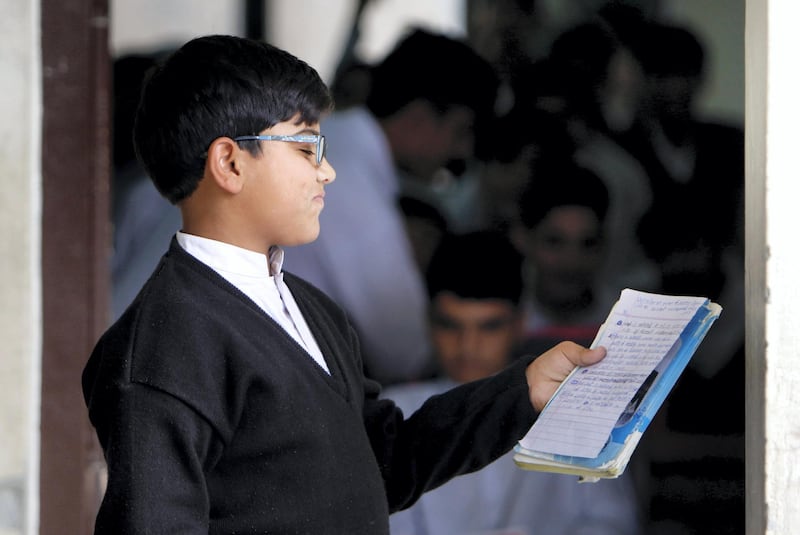
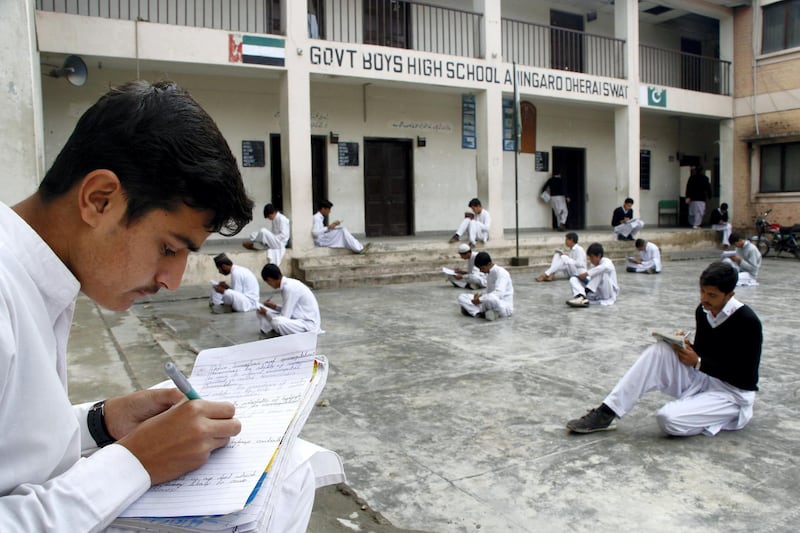
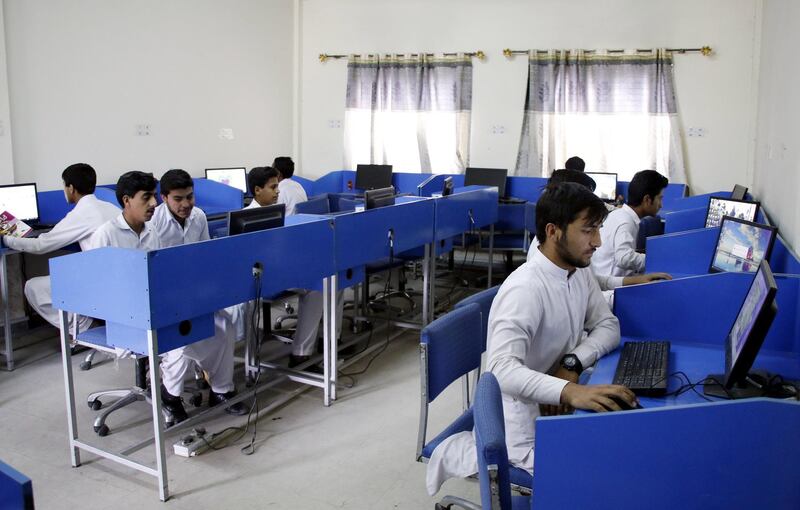
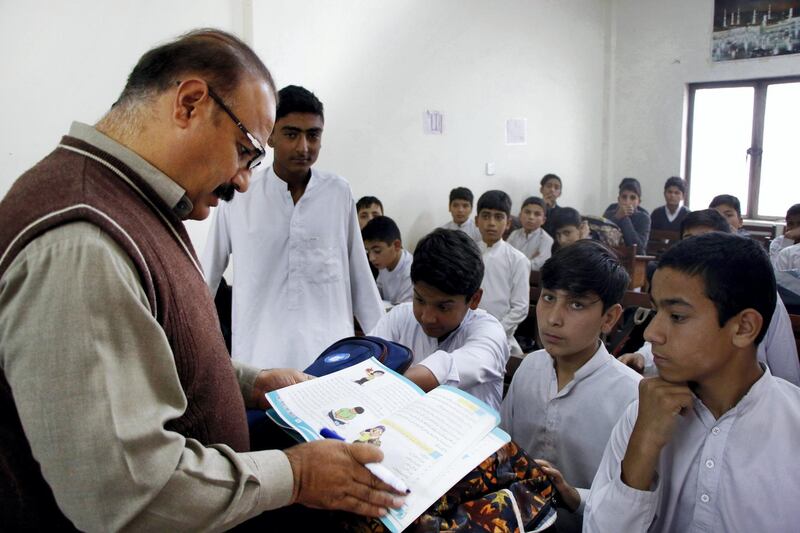
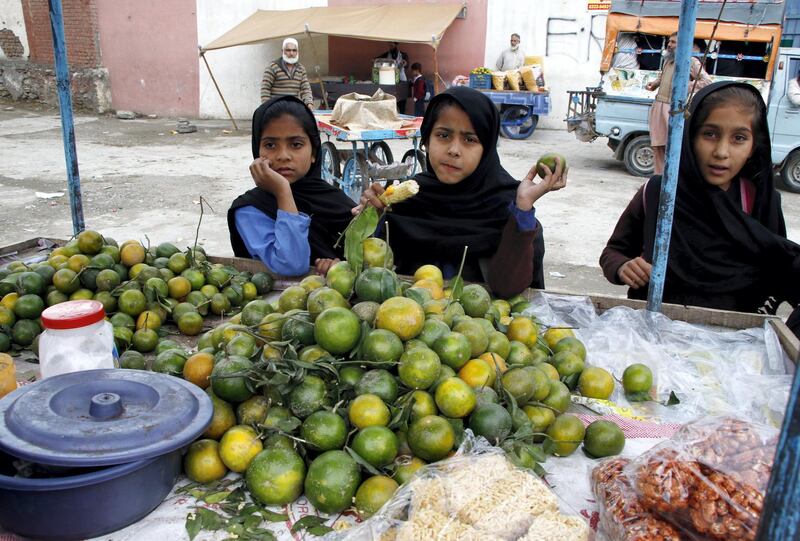
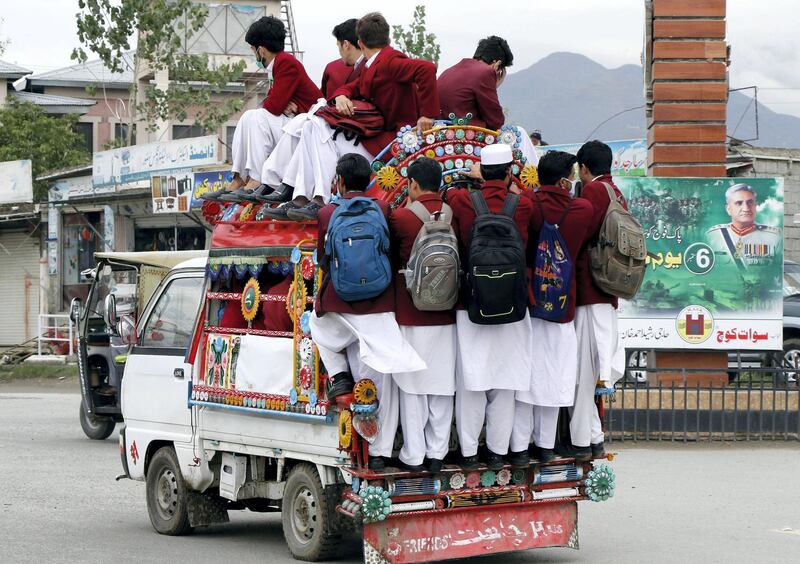
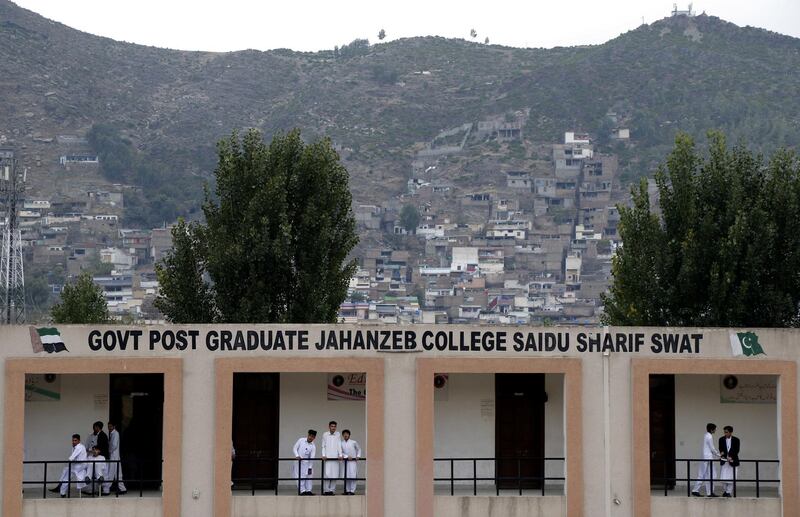
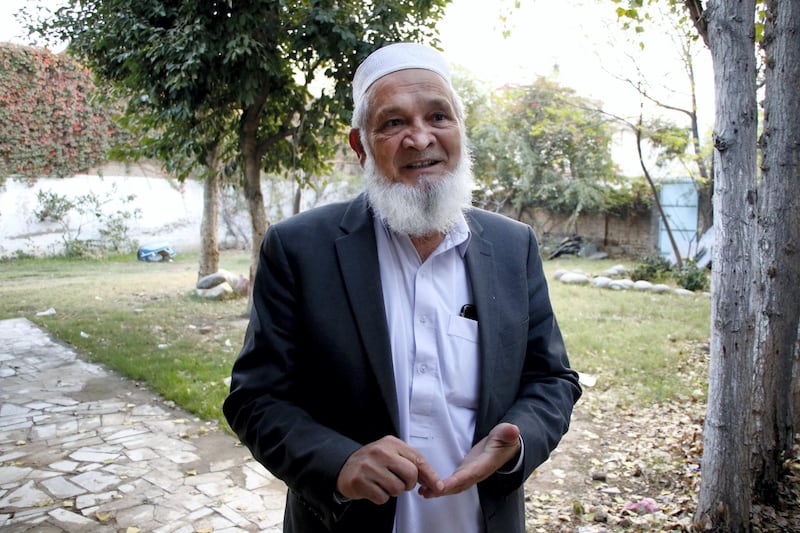
![The hustle and bustle returns to Khooni Chowk [bloody square] of Mingora city where Taliban during occupation of Swat district in Pakistan’s Khyber Pakhtunkhwa province used to display corpses of summarily executed people by the group each morning. Aamir Saeed for The National](https://thenational-the-national-prod.cdn.arcpublishing.com/resizer/v2/MJM5KQV46SDX25IWOUXHVA6T6Y.jpg?smart=true&auth=889c69f9ad7c4b31c430e34771145807c7228a36d64ffa917bdd485091c33d4c&width=800&height=533)
